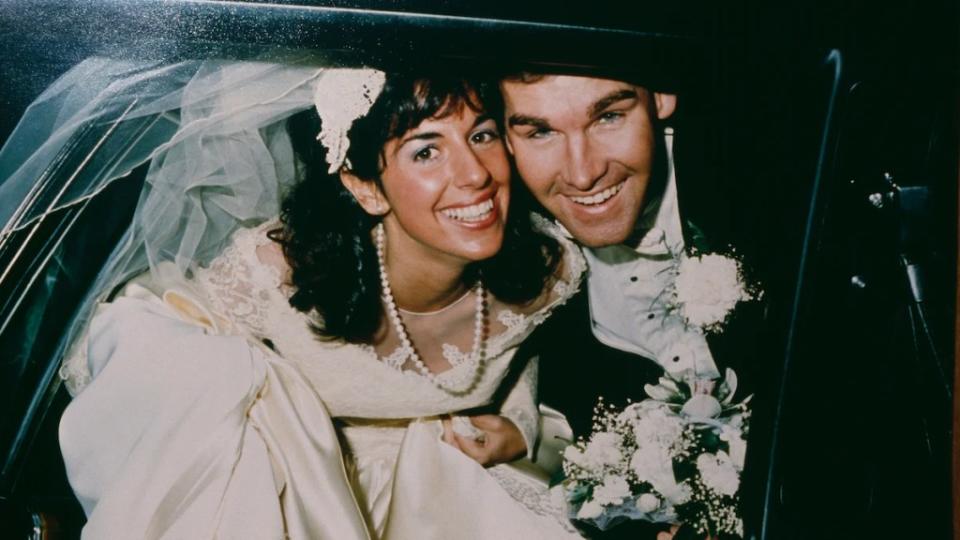‘Murder in Boston’ Filmmaker: Infamous 1989 Murder Was Fueled by City’s ‘Fraught Racial History’
With “Murder in Boston,” Jason Hehir examines how the 1989 murder of Carol Stuart — a pregnant white woman whose wounded husband falsely claimed that a Black man had shot them both — played out in a city that had seen violent clashes between white and Black communities. Hehir’s previous HBO docuseries work includes the Emmy-winning Michael Jordan doc, “The Last Dance.”
While some detectives and reporters doubted Chuck Stuart’s story at the time, the police and the media focused their intense attention on the residents of predominantly Black neighborhood Mission Hill. Willie Bennett, who unfortunately fit Stuart’s vague description of the assailant, was convicted. The actual murderer was eventually revealed to be none other than Stuart himself.
Hehir grew up in nearby Newton, Massachusetts and turned 13 about a month before the murder happened.
“I was fascinated by the story back then, as the entire city was,” Hehir told TheWrap. “It’s all people talked about for 10 weeks.”

“Since I’ve been a filmmaker, I’ve thought that this would be a perfect way to examine Boston’s fraught racial history through the lens of this case,” he related ahead of the three-part series’ premiere.
TheWrap: I did not know a lot of this history of Boston, like the violent reaction to Black students being bused into white neighborhoods in the ’70s.
Jason Hehir: I thought it was important to to digress a bit in that first episode and show you exactly why things were so tense in the city at that time. And how the table had been set perfectly between the lingering effects of the busing crisis, the crack epidemic and the decision to institute stop-and-frisk. All of that was kind of a perfect storm for this to play out the way that it did. So I felt it was necessary for us to go back about 15 years before the murder to show you what had led up to that night.
How hard was it to convince people who were affected by this at the time to talk to you for this?
Very difficult. I can’t recall in my 25 years in this business ever having a harder time booking people, because it was so painful. There are a lot of major institutions that don’t look great. The Mayor’s Office, the police department, the media. So to get people from those institutions to talk with me was a challenge.
For Carol’s family, it’s very painful for them to revisit. I understand why they wouldn’t want to participate. The Stuart family who are, by and large, disgusted with what Chuck did, had no interest in coming on camera and discussing what he did. And then the Bennett family has been wronged by so many institutions in Boston through the years, including the media. They were naturally very skeptical and very reluctant to trust me.
Have the participants seen the series? What was their reaction?
It was painful for them to watch. There were a lot of tears when we’re talking about the Bennett family and the Mission Hill community. I think it was painful but cathartic, and gratifying to see their side of the story finally articulated.
They have waited 34 years to demonstrate to people that Willie was unjustly accused and that their neighborhood was unjustly persecuted. So it was a concoction of relief and sadness and catharsis and vindication.
Some of the journalists covering it at the time had doubts about Chuck’s story, but none of them were able to write about it.
Michelle Caruso, who was our chief skeptic, said her editor needed to have a source on the record saying that they were investigating Chuck Stuart. And no one was willing to say that at the time, because Chuck was the most sympathized-with figure in Boston at that point.
This is a man who had just lost his wife and his baby and was fighting for his own life. And there was no precedent for that case, where someone shoots themselves. So he’s bleeding out, he damn near died that night.
I give the police and I give investigators a pass for those first 24-48 hours. If someone is bleeding to death and gives a description of the suspect, I can see them canvassing that neighborhood and trying to find someone who matches that description.
What happened in the following 6-10 weeks, that’s where the gross civil rights violations occurred. The police were privy to information that they didn’t pursue, because they insisted on pursuing this phantom Black man that Chuck had described.
Do you think the media has changed how they cover cases like this in the meantime?
Yeah, I think that this is a cautionary tale, one of those cases that causes people to take a beat and say, “Let’s make sure that we don’t get another Chuck Stuart situation on our hands.” I think the media is a lot more sensitive, a lot more compassionate these days. And a lot more cautious. And that’s a good thing.
This seems like your most personal documentary so far.
It definitely is. The sports ones, those are the teams and players that I grew up idolizing. But those weren’t life and death. This was quite literally life and death, this story.
It’s the life and death of a city, the lifeblood of the city and the reputation of the city. I took it tremendously seriously that we would do this responsibly and comprehensively and accurately. There’s a reason why we researched this for a year before we rolled one camera. We wanted to get everything absolutely right.
“Murder in Boston: Roots, Rampage & Reckoning,” premieres on HBO on Monday at 9 p.m.
The post ‘Murder in Boston’ Filmmaker: Infamous 1989 Murder Was Fueled by City’s ‘Fraught Racial History’ appeared first on TheWrap.


